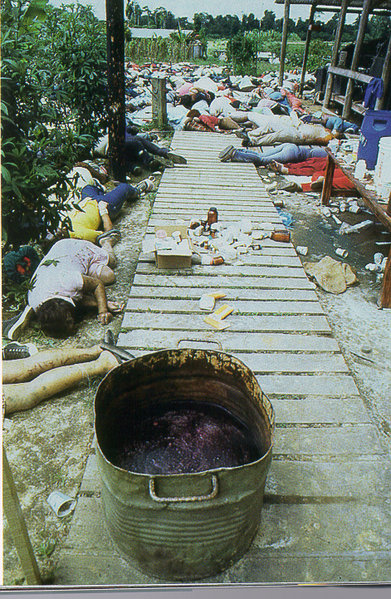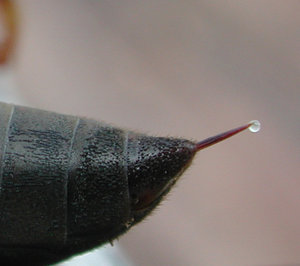|
If Nux Vomica appeals more than your typical poison of Vodka and Orange then this is the page for you, Poison, Canker,
Toxin, Venom or Virus, call it what you will here it is, more tea...?
How Poison works
Contact or absorption of poisons cause rapid death or impairment. Agents that act on the nervous system can paralyze in seconds
or less, and include both biologically derived neurotoxins and so-called nerve gases, which may be synthesized for warfare
or industry. For example inhaled or ingested cyanide almost instantly starves the body of energy by poisoning mitochondrial
cells and the synthesis of ATP for energy.
So, what's your poison?
|
Name:
|
Synonms:
Where you find it:
What part you use:
|
What it does:
|
|
Aconite
|
Monkshood. Blue Rocket. Friar's Cap. Auld Wife's Huid.
Lower mountain slopes of North portion of Eastern Hemisphere Great Britain.
The whole plant.
|
Aconite is a deadly poison: tingling and numbness of tongue and mouth and a sensation of ANTS crawling over the body, vomiting,
laboured breathing, irregular pulse, giddiness, staggering..death.
|
|
Apple Balsam
|
Balsamina.
East India.
The fruit deprived of the seeds.
|
Caution is required in administering - large doses resulting in death.
|
|
Bloodroot
|
Indian Paint. Tetterwort. Red Pucoon. Red Root. Paucon. Coon Root. Snakebite. Sweet Slumber.
United States of America and Canada.
Root, whole plant.
|
Burning of the stomach, intense thirst, vomiting, faintness vertigo, intense prostration with dimness of eyesight. But it
tastes so disgusting you'll throw up before you swallow it! Hmm nice!
|
|
Cabbage Tree
|
Vouacapoua inermis. Bastard Cabbage Tree. Worm Bark.
Jamaica and other West Indian Islands.
Bark.
|
Vomiting, fever and delirium. Lime juice and castor oil are the only antidotes.
|
|
Dropwort (Hemlock Water)
|
Horsebane. Dead Tongue. Five-Fingered Root. Water Lovage. Yellow Water Dropwort.
UK.(Eastern Counties)
Root.
|
* The most poisonous of all indigenous UK plants*
Death occurrs within three hours of ingestion. The name 'Dead Tongue' given from the paralysing effect.
|
|
Foxglove.
|
Witches' Gloves. Dead Men's Bells. Fairy's Glove. Gloves of Our Lady. Bloody Fingers. Virgin's Glove. Fairy Caps. Folk's Glove.
Fairy Thimbles.
Common as a wild-flower in Great Britain.
Leaves.
|
A modern day wonder drug- best left to the experts- too much will make your heart explode after hyperactivity of the left
artium and arterioles.
Digitalis is an excellent antidote in Aconite poisoning by the way. Dicey...
|
|
Poison Ivy
|
Poison Oak. Poison Vine.
widely distributed in Europe, Asia and North America.
Leaves.
|
the slightest contact with the leaves causes a rash ending in ulceration.
Internally it causes gastric intestinal irritation, drowsiness, stupor and delirium.
Recommended in cases of incontinence. I'd rather piss myself thanks.
|
|
Nightshade (Deadly)
|
Belladonna. Devil's Cherries. Naughty Man's Cherries. Divale. Black Cherry. Devil's Herb. Great Morel. Dwayberry.
Central and Southern Europe, South-west Asia, cultivated in England.
Root, leaves, tops.
|
Almost extinct from UK. Those poisoned by Belladonna can expect loss of voice, violent bending of the torso, continual movements
of the hands and fingers, dilation of pupils, severe thirst,paralysis of involuntary muscles resulting in suffocation.
|
|
Nux Vomica
|
Poison Nut. Semen strychnos. (Strychnine) Quaker Buttons.
India in the Malay Archipelago.
Dried ripe seeds.
|
Violent convulsions by stimulation of the spinal cord, rise in blood pressure, surgical shock and cardiac failure.
|
Sure enough they're all pretty grim, but they're plants which have a purpose and you have to admire them for that. Cure
or Kill! We'd be lost without plants- they give us air, clothes, paper, and more importantly medicine plus just about all
the green stuff you can buy in Sainsburys. Sometimes, just sometimes, they fight back. And you know what- they'll win!
back to top
Famous Poisonings
Poison, the weapon of choice...from Religious Sects and Wars to recent attempted Political Assassinations, poison has
a lot to answer for...

Ukrainian opposition leader Viktor Yushchenko was poisoned by Dioxin (2,3,7,8-tetrachlorodibenzo-p-dioxin or TCDD) one of
the most toxic chemicals to science which is Carcinogenic.
Dioxin reduces the number of T and B cells (immune cells that develop in the bone marrow, then circulate throughout the
blood and lymph, fighting off nasties) Luckily for him, it wasn't lethal, but just strong enough to disfigure him. Nice!
Jones Town Massacre
After being promised a 'paradise' and recieving hard labour, two metal buckets of grape Flavor Kool Aid laced with Valium
and Cyanide were brought into the assembly hall in a utopian community in Guyana of Revered Jim Jones Peoples Temple. The
mixture was dispensed in small paper cups and given out firstly to Children, then the elderly and finally the adults.
Local authorities eventually found 913 of the 1,110 inhabitants dead, including 276 children.

Other famous poisonings
* Hitler & Eva Braun- Cyanide
* Goebbels (whole family)- Cyanide
* Hermann Goring- Cyanide
* Socrates- Forced to drink Hemlock
* Pope Alexander VI (Borgia) -Unknown poison
* Yasser Arrafat- (Still unknown whether poisoned)
then of course there's
* Snow White
* Hamlet
* Romeo
But that's just speculation!
Household Poisons
Deoderants contain Aluminum (linked to Alzheimer's disease)
Toothpaste contains Non-organic fluoride (For Osteoporosis)
Mouthwash has Aspartame (For Brain tumors)
Antibacterial soap products are made with a potent nerve chemical similar to Agent Orange -- that's what kills the bacteria..hmm,
nice)
Shampoo contains Sodium Laureth Sulfate- (A Carcinogen! hurrah!)
and if thats not enough you can also kill yourself with:
VO5
Nail Polish Remover
Antifreeze
Furniture Polish
Poison! Christian Dior Perfume
Hurrah for hairspraying yourself to death!
Classification of biological poisons by mechanism
|
Corrosives
|
Corrosives mechanically damage biological systems on contact. Both the sensation and injury caused by contact with a corrosive
resembles a burn injury.
|
|
Acids
|
Strong inorganic acids, such as concentrated sulfuric acid, nitric acid or hydrochloric acid, destroy any biological tissue
with which they come in contact within seconds.
|
|
Bases
|
Strong inorganic bases, such as lye, gradually dissolve skin on contact but can cause serious damage to eyes or mucous membranes
much more rapidly. Ammonia is a far weaker base than lye, but has the distinction of being a gas and thus may more easily
come into contact with the sensitive mucous membranes of the respiratory system.
|
|
Metabolic poisons (energy)
|
Metabolic poisons act by adversely disrupting the normal metabolism of an organism. E.G.
*Cyanide bonds with an enzyme involved in energy production.
*Rotenone - disrupts electron transport in cellular respiration
*Antimycin - disrupts electron transport in cellular respiration
*Malonate - inhibits cellular respiration
|
|
Heavy metals
|
A common trait shared by heavy metals is the chronic nature of their toxicity. Low levels of heavy metal salts ingested over
time accumulate in the body until toxic levels are reached. E.G.
* arsenic
* barium
* cadmium
* chromium
* lead
* mercury
* thallium
* uranium
|
|
Neurotoxins
|
Neurotoxins interfere with nervous system functions and often lead to near-instant paralysis followed by rapid death. They
include most spider and snake venoms, as well as many modern chemical weapons.
|
|
Carcinogens
|
A carcinogen is a chemical substance believed to cause cancer. There are an enormous variety of possible carcinogens. Some
of the more controversial examples are listed below.
* Artificial sweeteners (e.g. Aspartame and Saccharin)
* Asbestos - a widely used insulating material that causes mesothelioma and other cancers especially in the respiratory
tract.
* Benzene (lab solvent used in various chemical reactions and orange squash).
* Carbon tetrachloride (used in fire extinguishers).
|
|
Non-radioactive inorganic poisons
|
* Arsenic compounds
arsenic trioxide
Fowler's solution
* inorganic compounds
phosgene
phosphine
hydrogen sulfide
* Acids and bases, corrosives
various light metal oxides, hydroxides, superoxides
Bleach, some pool chemicals, other hypochlorates (acidic and oxydizing effect)
hydrofluoric acid
|
The lethal Injection
Lethal injection is a method of capital punishment. It gained popularity in the twentieth century as a supposedly humane form
of execution meant to supplant methods such as electrocution, hanging, firing squad, gas chamber, or decapitation.
After the condemned is secured on the execution table, two intravenous catheters are inserted, one in each arm.
The injection is intravenous designed to induce rapid unconsciousness followed by death through muscular paralysis of
the lungs and/or by inducing cardiac depolarization. 3 chemicals are injected:
1. Sodium thiopental, in a dose high enough to cause death by itself: to put the victim to sleep.
2. Pancuronium/Tubocurarine: to stop all muscle movement except the heart. This causes involuntary muscle paralysis and
collapse of the diaphragm.
3. Potassium chloride: to stop the heart from beating, and thus the victim's death.
Death usually results within 5 minutes, although the whole procedure can take up to 45 minutes and while the paralysing
agent continues to paralyze the prisoners, they die an agonizing death through slow suffocation while fully conscious. Robyn
Lee Parks undergoing Lethal Injection in 1992, gasped and suffocated for ten minutes until his death.....hmm Humane they say?

|
| Lie down the doctor will see you in a minute... |
There's easier ways to make a living...

|
| This might sting a bit.... |
The Justin O. Schmidt Pain Index was created by Justin O. Schmidt, an entomologist. Having been stung by almost everything,
Schmidt created an index to compare the overall pain of insect stings on a four-point scale. Surely there's easier ways to
make a living?
* 1.0 Sweat bee: Light, ephemeral, almost fruity. A tiny spark has singed a single hair on your arm.
* 1.2 Fire ant: Sharp, sudden, mildly alarming. Like walking across a nylon carpet & reaching for the light switch.
* 1.8 Bullhorn acacia ant: A rare, piercing, elevated sort of pain. Someone has fired a staple into your cheek.
* 2.0 Bald-Faced Hornet: Rich, hearty, slightly crunchy. Similar to getting your hand crushed in a revolving door.
* 2.0 Yellowjacket: Hot and smoky, almost irreverent. Imagine WC Fields extinguishing a cigar on your tongue.
* 3.0 Red harvester ant: Bold and unrelenting. Somebody is using a drill to excavate your toenail.
* 3.0 Paper wasp: Caustic & burning. Distinctly bitter aftertaste. Like spilling a beaker of Hydrochloric acid
on a paper cut.
* 4.0 Pepsis wasp: Blinding, fierce, shockingly electric. A plugged in hair drier has been dropped into your bath
(if you get stung by one you might as well lie down and scream).
* 4.0+ Bullet ant: Pure, intense, brilliant pain. Like walking over flaming charcoal with a 3-inch nail in each foot.
So that's poisons, toxins, venoms in a nutshell..of course if you need to know more, then you're one sick puppy mister.
|